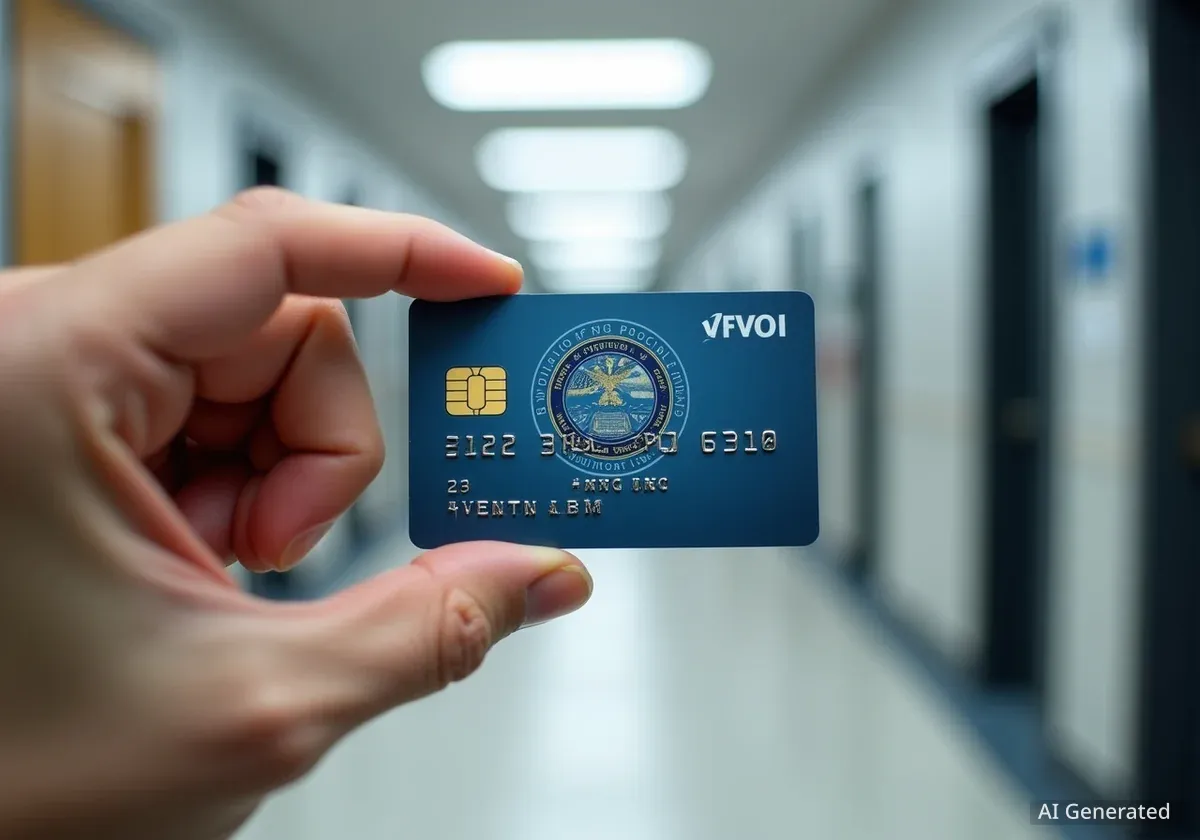The United States federal government is implementing a major policy shift to eliminate paper checks for millions of Americans. The Social Security Administration (SSA) and the Internal Revenue Service (IRS) will transition nearly all payments, including retirement benefits and tax refunds, to electronic methods such as direct deposit and government-issued debit cards.
This move, coordinated with the U.S. Department of the Treasury, aims to modernize payment systems, increase efficiency, and enhance security for over 175 million combined recipients. The transition marks the end of a long-standing practice of mailing physical checks for federal benefits and tax returns.
Key Takeaways
- The U.S. government is phasing out paper checks for Social Security benefits and IRS tax refunds.
- Payments will now be issued electronically through direct deposit or a government-provided debit card.
- The change for Social Security recipients is effective immediately, while the IRS will complete its transition by 2026.
- This policy shift is designed to reduce costs, speed up payment delivery, and minimize issues like lost or stolen checks.
- Options are available for individuals without traditional bank accounts to receive their funds electronically.
A Major Shift to Digital Payments
Two of the largest federal agencies are moving away from traditional paper-based payments. The Social Security Administration, which serves approximately 75 million people, and the Internal Revenue Service, which issues over 100 million tax refunds annually, are central to this digital transition.
The policy requires individuals to receive their funds through one of two electronic methods. The primary method is direct deposit into a personal bank account. For individuals who do not have a bank account, the government offers a prepaid debit card solution.
Background of the Digital Transition
The move toward electronic payments has been a long-term goal for the U.S. Treasury. The vast majority of recipients already use digital methods. According to federal data, over 99% of Social Security beneficiaries and 93% of tax refund recipients already receive their money electronically, making this final step a move to standardize the process for the remaining few percent.
Timeline and Implementation Details
The two agencies are implementing the change on slightly different schedules. The Social Security Administration's policy is taking effect immediately, while the IRS is adopting a more gradual approach.
Social Security Administration Changes
The transition for Social Security recipients is now active. This policy applies to all individuals receiving retirement or disability payments from the SSA. As of this summer, fewer than 750,000 Social Security recipients were still receiving paper checks, representing less than 1% of the total.
The SSA has urged all remaining check recipients to provide their direct deposit information promptly to avoid any disruption in payments. For those who need an exception to this rule, the agency has provided a dedicated contact number.
Internal Revenue Service Phase-Out
The IRS has initiated a gradual phase-out of paper checks for tax refunds. The process is scheduled to be fully completed by 2026, which will affect taxpayers filing their 2025 tax returns.
While the transition has begun, the IRS has not yet released comprehensive guidelines detailing every step of the phase-out. Taxpayers can expect more information as the 2026 deadline approaches. The agency's goal is to make the process as smooth as possible for the millions of households that receive a refund each year.
Why Go Digital?
The federal government states that electronic payments are significantly more reliable and cost-effective. A paper check is 16 times more likely to be lost, stolen, altered, or delayed compared to a digital transfer. This shift is expected to save taxpayer money on printing and mailing costs while providing faster and safer access to funds for recipients.
How to Receive Your Payments Electronically
Federal agencies have established clear procedures for recipients to transition to electronic payments. Options are available for those with and without bank accounts.
Setting Up Direct Deposit
For individuals with a bank account, setting up direct deposit is the most straightforward option.
- Social Security Recipients: Beneficiaries can update their payment information by accessing their personal my Social Security account online. Assistance is also available by calling the SSA at 800-772-1213.
- Taxpayers: Most tax preparation software and professional tax preparers guide users to enter their direct deposit information when filing their annual returns.
The Direct Express Debit Card Option
Recognizing that not everyone has a bank account, the government provides the Direct Express debit card as an alternative. This card is a prepaid Mastercard that is loaded with the recipient's funds on their payment date.
"Individuals who don’t have bank accounts can receive payments through government-issued debit cards," a Treasury official explained, ensuring that the transition to digital payments is inclusive.
To sign up for a Direct Express card, individuals can call 800-333-1795 or visit the official website at www.usdirectexpress.com. Cardholders can use it to:
- Make purchases at any location that accepts Mastercard.
- Withdraw cash at ATMs (fees may apply).
- Get cash back from participating retailers.
- Purchase money orders at post offices and other locations.
Impact on Recipients
The primary goal of this initiative is to improve the payment process for all Americans. By eliminating the vulnerabilities associated with paper checks, the government aims to ensure that benefits and refunds are delivered securely and on time.
While the vast majority of people will not be affected, the small percentage of individuals still receiving paper checks must take action. The SSA has provided an exception hotline at 877-874-6347 for those who believe they cannot transition to an electronic method.
This comprehensive move to digital payments reflects a broader trend in both government and the private sector to leverage technology for improved service delivery. As the transition unfolds, recipients are encouraged to use the official channels provided by the SSA and IRS to update their payment information and avoid potential delays.





